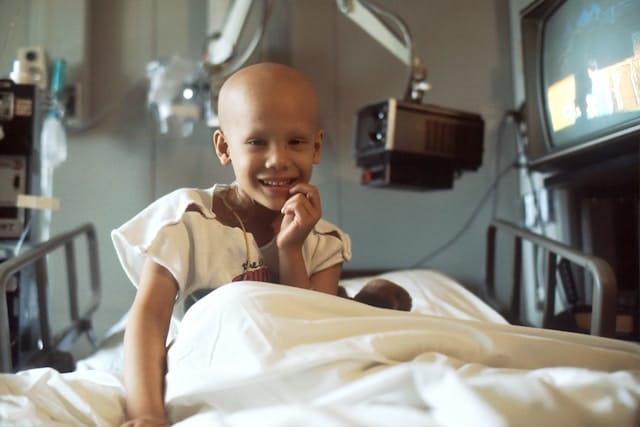As the world battles the widespread effects of cancer, a growing number of patients are exploring alternative therapies to complement their conventional treatment. This growing interest in holistic health has sparked numerous discussions about the potential benefits of aromatherapy in cancer care. Indeed, the use of essential oils in massage and other therapeutic applications has been documented for thousands of years, long before the advent of modern medicine.
This article will delve into the subject, examining the scientific evidence available, the oils often used in aromatherapy, and how these therapies are used in the clinical setting. It is our hope that this information will offer a broader perspective on the potential for aromatherapy to assist in the management of cancer symptoms and side effects, reducing anxiety and enhancing overall quality of life for patients.
Also to see : How to Use Foam Rolling for Myofascial Release in Athletes?
1. Understanding Aromatherapy
Aromatherapy, a type of alternative medicine, uses essential oils extracted from plants to support healing and well-being. The oils, which are volatile and aromatic by nature, can be used in various ways, such as massage, inhalation, or topical application.
Clinical studies have explored the effects of aromatherapy on various health conditions, including cancer. While aromatherapy isn’t a cure for cancer, it may offer some benefits as a complementary therapy. Some research has suggested that it may help alleviate symptoms such as pain and anxiety, common among cancer patients.
Have you seen this : What Are the Implications of the Gut-Skin Axis for Dermatological Health?
2. Essential Oils: Potent Plant Extracts
Essential oils, the heart of aromatherapy, are concentrated plant extracts that possess the essence, or scent, of the plant from which they are derived. Each oil has a unique set of chemical constituents that determine its aroma, color, and potential therapeutic effects.
Some of the oils commonly used in aromatherapy include lavender, chamomile, peppermint, and frankincense, among others. For instance, lavender is renowned for its calming and sleep-inducing effects, while peppermint is often used to relieve nausea and headaches. It’s important to note, however, that the effects can vary widely among patients.
3. Aromatherapy in Cancer Care: How It’s Used
In the realm of cancer care, aromatherapy is typically used as a complementary therapy. It’s not intended to replace conventional cancer treatments, but rather to enhance patients’ well-being and help manage symptoms and side effects.
For instance, massage with essential oils can provide a soothing experience, helping to reduce stress and promote relaxation. Inhalation of the oils, either directly or diffused in the air, may also offer benefits. Some patients may find that certain scents help reduce nausea or improve appetite, both common issues in cancer care.
4. The Science Behind Aromatherapy in Cancer Care
While the empirical evidence supporting aromatherapy in cancer care is growing, it’s important to approach it with an understanding of the science behind the practice. Numerous studies indexed on PubMed and other scientific databases have explored this topic, with varying results.
Some studies have found that aromatherapy massage can significantly reduce anxiety and improve mood among cancer patients. Other research has suggested potential benefits in terms of pain relief and sleep quality. However, these effects may depend on various factors, including the specific oil used, the method of application, and the individual patient’s response.
5. Looking Ahead: Aromatherapy in Clinical Practice
Considering the potential benefits of aromatherapy in cancer care, it’s critical to discuss how these therapies are implemented in the clinical setting. Many cancer centers are beginning to incorporate alternative therapies like aromatherapy into their care protocols, often in conjunction with traditional treatments.
The process typically begins with a consultation to assess the patient’s needs and symptoms, followed by the selection of appropriate essential oils. The oils are then used in the context of a massage or other application, tailored to the patient’s preferences and condition.
While aromatherapy shows promise as a complementary therapy in cancer care, it’s essential to remember that it should be used under the guidance of a healthcare professional. Not all essential oils are safe for everyone, and some can cause adverse reactions or interact with conventional medications.
In conclusion, while the research is ongoing and further studies are needed, it appears that aromatherapy may serve as a beneficial complement to traditional cancer treatment methods. By assisting with symptom management and improving patients’ overall quality of life, the integration of aromatherapy into cancer care may be a step forward in holistic healthcare.
6. Aromatherapy and Specific Cancer Types
While aromatherapy shows promise for all cancer patients, it might be especially useful for certain types of cancer. For example, breast cancer patients have been the focus of several studies examining the benefits of aromatherapy. The disease, in addition to its physical toll, can cause significant emotional distress, often leading to symptoms of anxiety and depression.
In a randomized controlled trial involving 288 breast cancer patients, half received aromatherapy massage in addition to their regular treatment. The results indicated a significant reduction in anxiety and depression among those who received the massage, suggesting that aromatherapy might be a potent tool in managing the emotional side effects of cancer treatment. Essential oils like lavender and chamomile, known for their calming effects, were commonly used in these treatments.
However, the benefits of aromatherapy are not limited to breast cancer patients. A study conducted on people with lung cancer revealed that usage of essential oils like tea tree and frankincense helped in alleviating symptoms such as nausea and vomiting. Another controlled trial on patients undergoing chemotherapy showed that applying peppermint oil topically reduced the occurrence of contact dermatitis, a common side effect of certain cancer treatments.
Despite these promising results, the efficiency of essential oils can vary widely among patients. More research is needed to determine the full range of benefits that aromatherapy can provide in cancer care, and healthcare professionals should always monitor its usage.
7. Aromatherapy: A Step Towards Holistic Cancer Care
Aromatherapy, with its roots in ancient medicine, is finding its place in modern healthcare as a complementary therapy. The potential benefits, from reducing anxiety to alleviating physical side effects like nausea, make it a promising addition to cancer treatment protocols.
However, it’s important to remember that while aromatherapy can enhance quality of life for cancer patients, it’s not a standalone treatment. It’s a supplementary tool, one that works alongside conventional therapies to provide a more holistic approach to cancer care.
As we move forward and continue to explore the potential of alternative therapies, it’s crucial that we do so with caution. While numerous clinical trials suggest that aromatherapy can be beneficial, these studies should not be interpreted as absolute validation of its effectiveness. Each cancer patient is unique and might respond differently to certain essential oils or methods of application.
Moreover, safety should always be a priority when using essential oils. Some oils can cause adverse reactions or interact negatively with conventional medications. Therefore, any usage of aromatherapy in cancer care should be under the guidance of a healthcare professional.
In conclusion, aromatherapy is a promising complementary therapy that can enhance the quality of life for cancer patients. It can help manage both the physical and emotional side effects of cancer treatment, providing a more holistic, patient-centered approach to care. As we continue to explore the potential of alternative therapies, it’s crucial that we do so with both optimism and caution, always prioritizing the patient’s overall well-being. As of today, 24/03/2024, the future of aromatherapy in cancer care looks promising, but it is clear that more research is required to fully understand its potential and establish best practices for its use.






